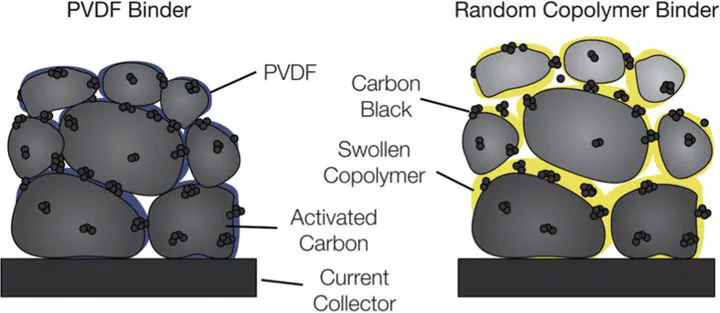Poly(arylene ether sulfone) copolymers as binders for capacitive deionization activated carbon electrodes
Jul 28, 2015·
,
 ·
0 min read
·
0 min read
B. M. Asquith
J. Meier-Haack
Prof. Dr. Bradley P. Ladewig

Abstract
Activated carbon electrodes for capacitive deionization (CDI) have been prepared using poly(arylene ether sulfone) random copolymers as binders. Due to the reduced mechanical strength and enhanced swelling of the polymers compared with PVDF binder, a 15 wt.% composition was found to be required to adequately bind the carbon particles. The hydrophilic nature of the polymers increased the wettability of the electrodes, however CV and EIS testing revealed a loss in capacitance compared with electrodes prepared with PVDF. This is thought to have been a result of polymer swelling, which reduced particle contact and hence charge transfer pathways within the carbon electrodes. As a result, poor micropore double layer formation was observed. Promisingly, EIS testing showed low charging resistance compared with electrodes prepared with PVDF, indicating the potential for hydrophilic polymers to be used as binders in CDI electrodes if charge transfer pathways between carbon particles can be maintained.
Type
Publication
Chemical Engineering Research and Design